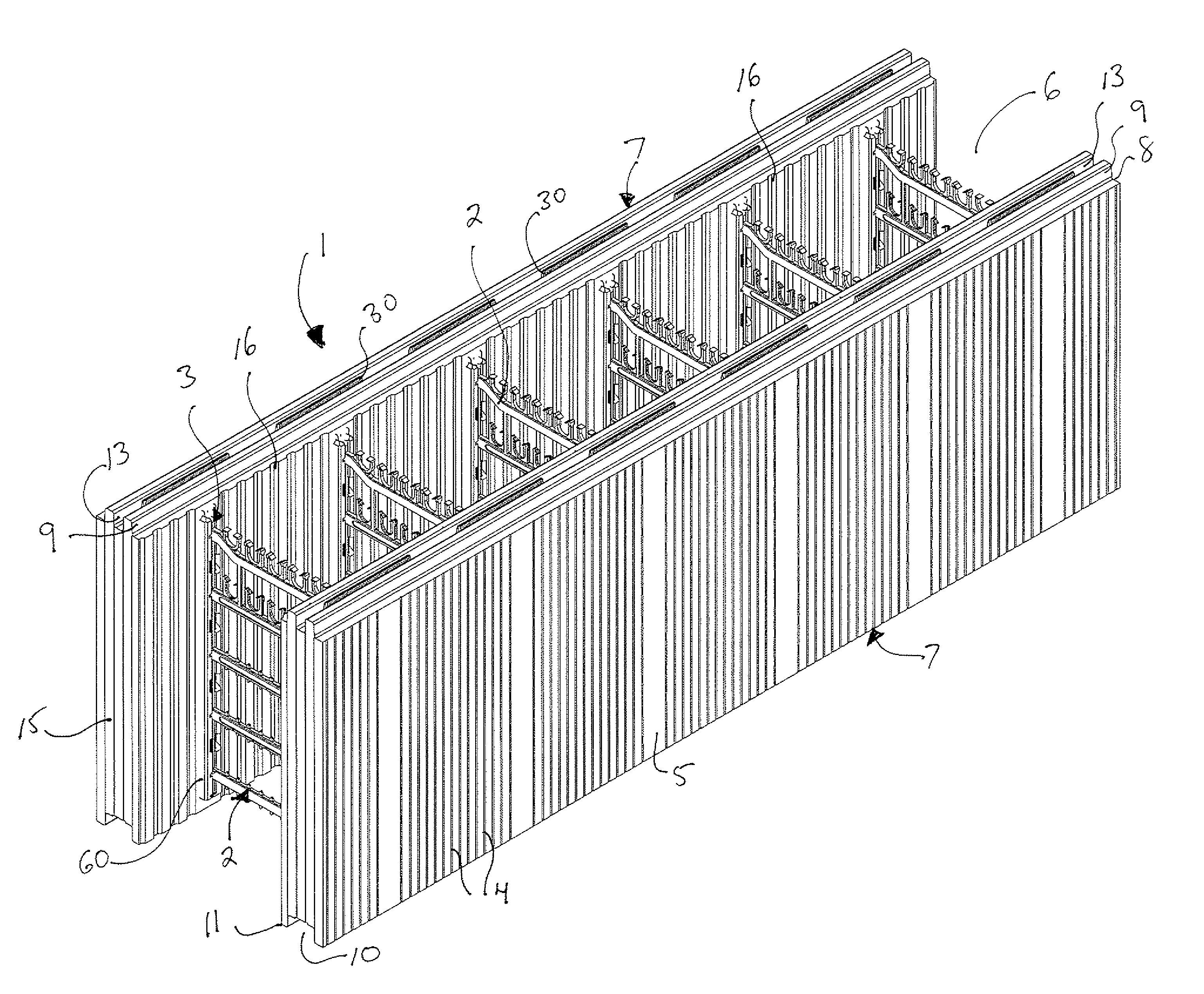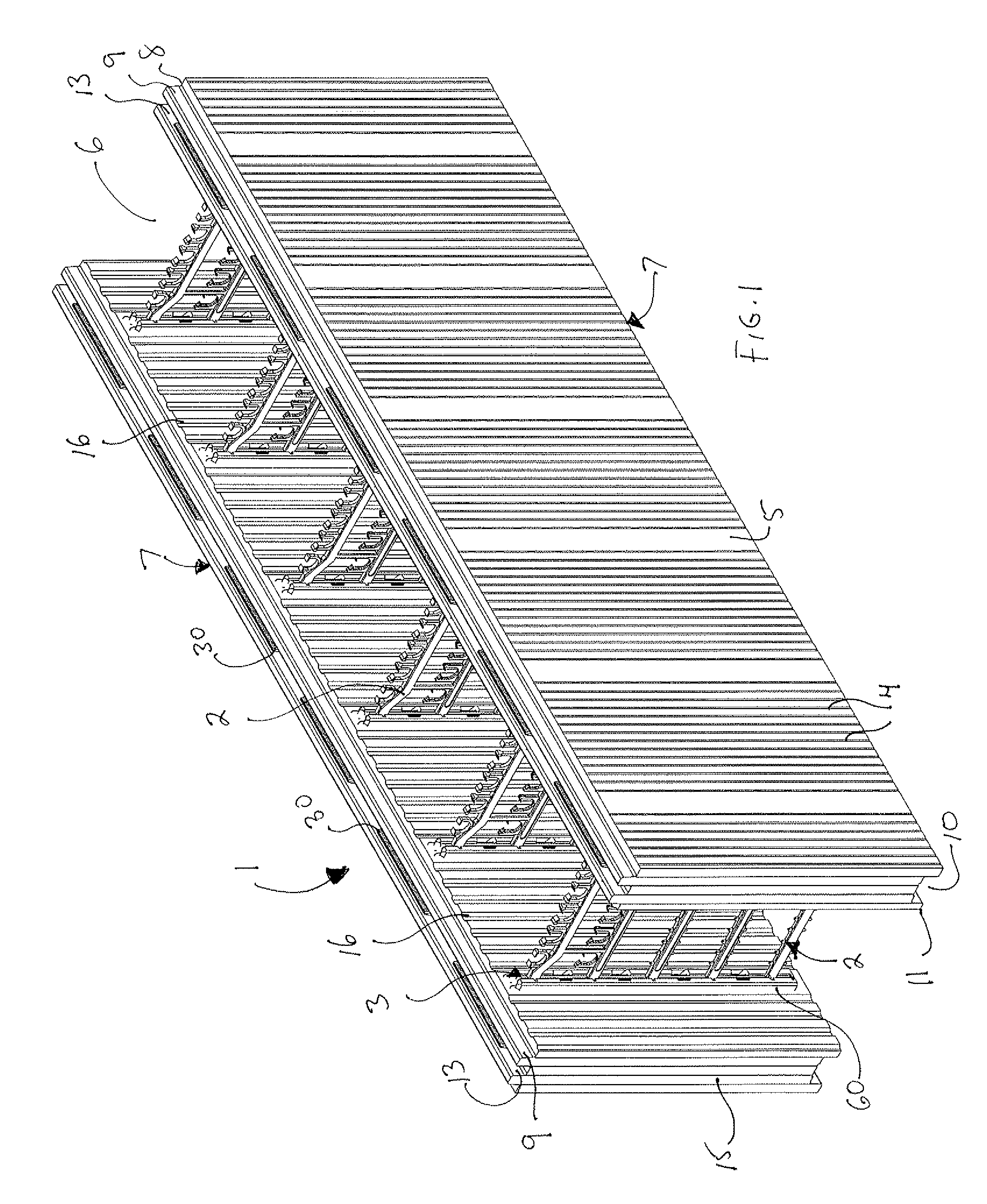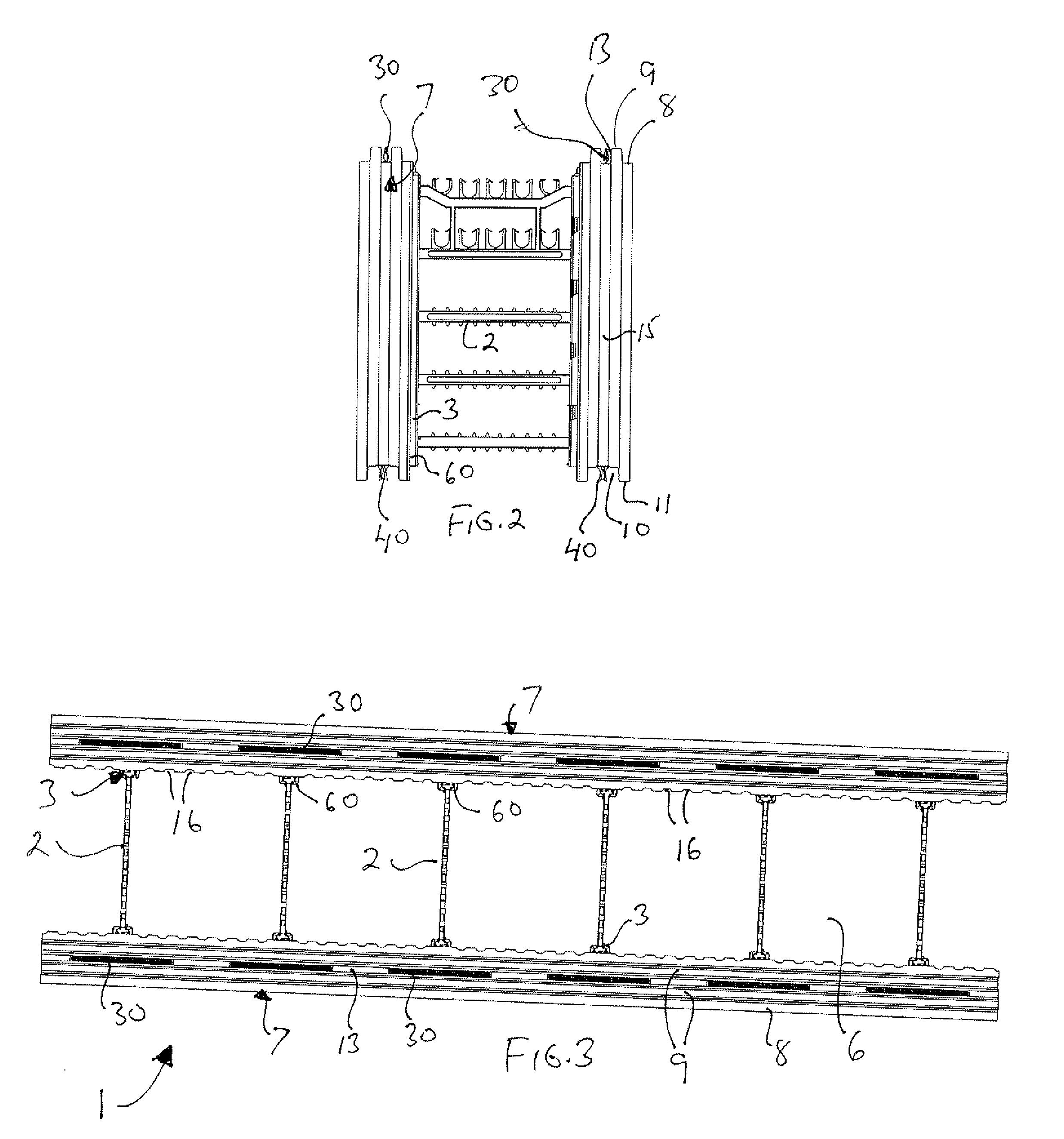Insulated concrete form
a concrete form and insulation technology, applied in the field of wall forming structure, can solve the problems of increasing labor costs and remaining numerous problems to solv
- Summary
- Abstract
- Description
- Claims
- Application Information
AI Technical Summary
Benefits of technology
Problems solved by technology
Method used
Image
Examples
Embodiment Construction
[0043] Referring initially to FIG. 1, there is shown a single discrete straight ICF block 1 which is the basic building unit of the present ICF system. These blocks will typically be 48 inches in length and 16 inches high although these dimensions can be varied up or down depending on job requirements. These blocks are placed end to end for the length of the wall and are stacked vertically, typically in a brick or staggered pattern, for the wall's height. The width of the block will vary with the width of the concrete wall being formed, which typically will vary from 4 inches to 10 inches of concrete in thickness. Each block consists of opposed spaced apart panels 7 of a moldable insulating material in the nature of a plastic foam such as expanded polystyrene, known as EPS, which is formed into rigid slabs that provide strength and rigidity as is known in the art. The specification of EPS is by example only, and the use of other insulating foam materials is contemplated within the s...
PUM
 Login to View More
Login to View More Abstract
Description
Claims
Application Information
 Login to View More
Login to View More - R&D
- Intellectual Property
- Life Sciences
- Materials
- Tech Scout
- Unparalleled Data Quality
- Higher Quality Content
- 60% Fewer Hallucinations
Browse by: Latest US Patents, China's latest patents, Technical Efficacy Thesaurus, Application Domain, Technology Topic, Popular Technical Reports.
© 2025 PatSnap. All rights reserved.Legal|Privacy policy|Modern Slavery Act Transparency Statement|Sitemap|About US| Contact US: help@patsnap.com



